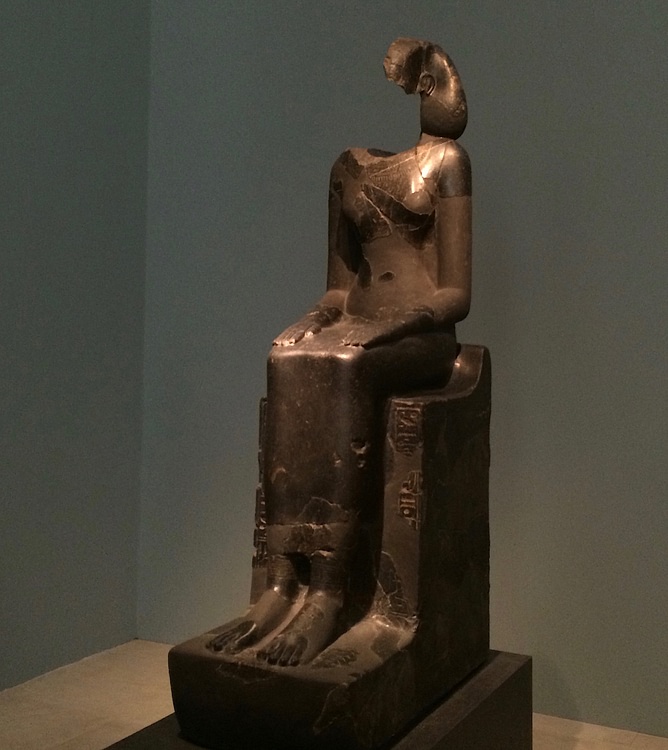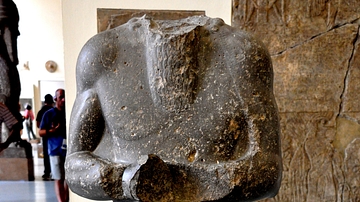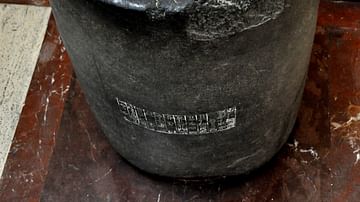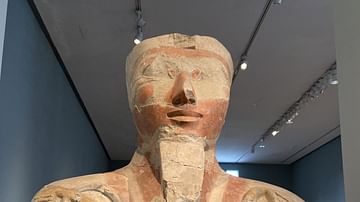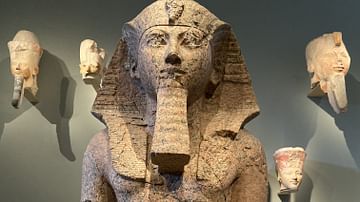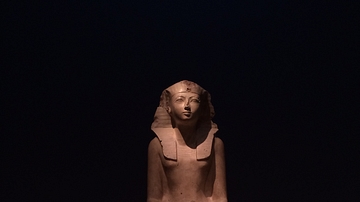Server Costs Fundraiser 2024
Illustration
This black diorite statue of Maatkare Hatshepsut is a unique example of the king's personal artistic style. Most likely dating from the early years of her kingship, Hatshepsut is portrayed as fully-female, with breasts and delicate facial features, wearing the "khat" headdress of a male pharaoh (c. 1479 - 1458 BCE, The Metropolitan Museum of Art).
About the Author
Cite This Work
APA Style
McLaughlin, E. (2017, July 08). Diorite Statue of Hatshepsut. World History Encyclopedia. Retrieved from https://www.worldhistory.org/image/6871/diorite-statue-of-hatshepsut/
Chicago Style
McLaughlin, Elsie. "Diorite Statue of Hatshepsut." World History Encyclopedia. Last modified July 08, 2017. https://www.worldhistory.org/image/6871/diorite-statue-of-hatshepsut/.
MLA Style
McLaughlin, Elsie. "Diorite Statue of Hatshepsut." World History Encyclopedia. World History Encyclopedia, 08 Jul 2017. Web. 26 Jul 2024.
